The Kriegsmarine ("War navy") was the name of the German Navy between 1935-1945, during the Nazi regime, superseding the Reichsmarine of the Weimar Republic, and the Kaiserliche Marine of World War I. 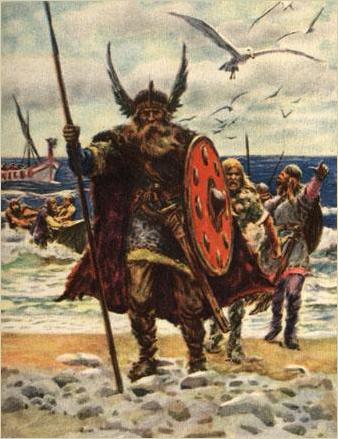
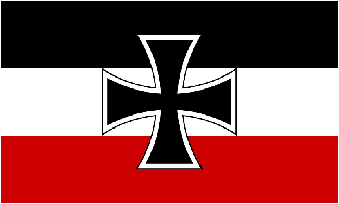
Kreigsmarine - History of the German Navy(ies) ==========================================================================
The Kaiserliche Marine or Imperial Navy was the German Navy created by the formation of the German Empire. It existed between 1871 and 1919, growing out of the Prussian Navy and Norddeutsche Bundesmarine. Kaiser Wilhelm II greatly expanded the Navy, causing a naval arms race between the German Empire and the British Empire. The navy was largely destroyed at Scapa Flow in 1919 by its own officers after the loss of the land war on the Western Front of World War I. 
KAISERLICHE MARINE - Kaiser and Empire - Prior to World War I ...
Ships of the Kaiserliche Marine were designated SMS, for Seiner Majestät Schiff (His Majesty's Ship).
The Kaiserliche Marine achieved some important operational feats. It inflicted the first major naval defeat on the Royal Navy in over 100 years at the Battle of Coronel. It also emerged from the fleet action of the Battle of Jutland having destroyed more ships than it lost.
It was the first navy to successfully operate submarines on a large scale at war (375 submarines had been commissioned by the end), and also operated zeppelins. It was never able to match the numbers of the Royal Navy, but it did have better shells and propellant for much of World War I, meaning that it never lost a ship to a catastrophic magazine explosion from an above-water attack (the old pre-dreadnought Pommern sank rapidly at Jutland after a magazine explosion caused by underwater attack).
Despite their ultimate importance, the German navy declined to take up the cause of another experiment, the submarine, until 1904. The first submarine, U-1 was delivered in December 1906, built by Krupps Germania in Kiel. The first submarine had 238 ton displacement on the surface and 283 tons submerged. The paraffin engine developed 10 knots on the surface with a range of 1500 sm. Submerged, the ship could manage 50sm at 5 knots using battery electric propulsion. The ships followed a design by Laubeuf first used successfully in 1897, having a double hull and flotation tanks around the outside of the main crew compartments. The submarine had just one torpedo tube at the front and a total of three torpedos. The early engines were noisy and smokey, so that a considerable boost to the usefulness of the submarine came with the introduction of quieter and cleaner diesel engines in 1910, which were much more difficult for an enemy to detect.
On 3 December 1906 the Royal Navy received a new battleship, HMS Dreadnought. She became famous as the first of a new concept in battleship design, using all big gun, single calibre armament. She used turbine propulsion for greater speed with less space required by the machinery, and her guns were arranged so that three times as many could be brought to bear when firing ahead, and twice as many when firing broadside. The design was not a uniquely British concept as similar ships where being built around the world, nor was it uniquely intended as a counter to German naval expansion, but the effect was to immediatley require Germany to reconsider its naval building program. The battleship design was complemented by the introduction of a variant with lighter armour and greater speed, which became the battlecruiser.
The revolution in design, together with improvements in personnel and training severely brought into question the German assumption that a fleet of 2/3 the size of the Royal Navy would at least stand a chance in an engagement. By 1906 Germany was already spending 60% of revenue upon the army. Either an enormous sum now had to be found to develop the navy further, or naval expansion had to be abandoned. The decision to continue was taken by Tirpitz in September 1905 and agreed by Chancellor Bülow and the Kaiser, while Dreadnought was still at the planning stage. The larger ships would naturally be more expensive, but also would require enlargement of harbours, locks and the Kaiser Wilhelm canal, all of which would be enormously expensive. Estimated cost for new dreadnoughts was placed at 36.5 million GM for 19,000 ton displacement ships (larger than Dreadnought at 17,900 tons), and 27.5 million GM for battlecruisers. 60 million GM was allocated for Dredging the canal. The Reichstag was persuaded to agree to the program and passed a Novelle amending the navy bills and allocating 940 million GM for a dreadnought program and the necessary infrastructure. Two dreadnoughts and one battlecruiser were to be built each year.
By the start of World War I, the Kaiserliche Marine possessed 22 pre-Dreadnoughts (Kurfürst Friedrich Wilhelm and Weißenburg, of the Brandenburg class, had been sold to the Ottoman Empire in 1910), 19 dreadnought battleships, and 7 battlecruisers.
Admiral von Tirpitz later became the commander of the Navy. The main fighting forces of the navy were to become the High Seas Fleet, and the U-boat fleet. Smaller fleets were deployed to the German overseas protectorates, the most prominent being assigned to the East Asia Station at Tsingtao.
Minor engagements included the commerce raiding carried out by the SMS Emden, SMS Königsberg, and the sailing ship and commerce raider SMS Seeadler.
The Imperial Navy also carried out land operations, eg operating the long-range Paris Gun (which was based on a naval gun). The Siege of Tsingtao used naval troops also, since Tsingtao was a naval base.
The Reichsmarine was the name of the German Navy during the Weimar Republic and first two years of Nazi Germany. It was the naval branch of the Reichswehr, existing from 1918 to 1935. In 1935 it became the Kriegsmarine, a branch of the Wehrmacht; a change implemented by Adolf Hitler. 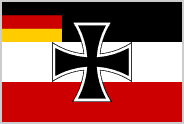
REICHSMARINE - Weimar Republic - During the interim between the World Wars ...
The Vorläufige Reichsmarine (Provisional Imperial Navy) was formed after the end of World War I from the Kaiserliche Marine.
The provisions of the Versailles Treaty restricted the German navy to 15,000 men and no submarines, while the fleet was limited to six pre-dreadnought battleships, six cruisers and 12 destroyers. Replacements for the outdated battleships were restricted to a maximum size of 10,000 tons.
The Treaty of Versailles limited the size and armament of the Reichsmarine and prevented it from introducing new technologies. The restrictions were intended to prevent the German navy from becoming a threat to the Allied powers. On the other hand, the Allies had made certain that the Reichsmarine would be in the foreseeable future the strongest power in the Baltic Sea, in order to serve as a counterweight against the new Soviet Union, which was viewed with distrust by the Allies.
The Reichsmarine tried to meet the arms restrictions with secret armament and technical innovations such as the introduction of the pocket battle ship.
NV Ingenieurskantoor voor Scheepsbouw (Dutch: engineer-office for shipbuilding), usually contracted to IvS, was a Dutch dummy company set up by the Reichsmarine after World War I in order to maintain and develop German submarine know-how and to circumvent the limitations set by the Treaty of Versailles. The company designed several submarine types for paying countries, including the Soviet S class submarine and the prototypes for the German Type II submarine and the German Type VII submarine.
The company was a joint venture by the German shipyards AG Vulcan and the Krupp-owned Germaniawerft in Kiel and AG Weser in Bremen. Design work was carried out at the facilities of these companies in Germany.
The company was funded by the German Navy. IvS first constructed two submarines for Spain, which were later sold to Turkey, both of which were launched in 1927 and were closely based on the Type UBIII of the Kaiserliche Marine. 1927-1933 five IvS submarine designs were build in Finland. One of them was CV 707, later Vesikko, which was the prototype of type IIA. The contracts were worded in such a way that IvS personnel were involved with crew training and selection, and were allowed to take part in boat service trials. The Germans — who were, at the time, tightly restricted from using their submarines for themselves — thus gained a first-hand knowledge of how their new prototypes worked in practice.
At the time of IvS, the Germans were bound by a Treaty that they had signed and sworn to uphold as a result of the Armistice in 1918. This treaty, among its other terms, demanded that all of the German U-boats were destroyed or given to other nations. Thus the German Navy was left without a submarine capacity, and IvS was created to get around these restrictions. IvS ultimately provided the foundations of the massive, thousands-strong navy that Germany developed for use in World War II.
In 1933 Germany established a school for training Unterseeboot crews, ironically under the title 'Anti-Submarine Defence School,' or in their tongue, Unterseebootsabwehrschule. This school was established in Kiel. This program involved provision for a small fleet of eight 500 ton submarines. This number was later doubled to 16.
Later, Germany developed plans for an actual navy. The projected designs for the boats that were to be the composition of this navy were referred to as 'Experimental Motor Boats'. Deutsche Werke in Kiel was elected to build the new submarines, and a new U-boat base was to be built at Kiel-Dietrichsdorf. There component materials were gathered surreptitiously, in preparation for the order to begin production.
The IvS was also involved in designing plans for a Dutch project to build battlecruisers. Battlecruisers were deemed by some to be essential for the defence of the Dutch East Indies against possible Japanese expansion, especially so because the Royal Netherlands Navy lacked any large surface ships. The designs were heavily based on the German Gneisenau class and the final design was similar to the IvS design, because the Germans were expected to at least furnish the gun turrets for these ships, as constructing them was beyond Dutch capabilities. In the end, political disagreements slowed down the decision making process to April and none of the projected ships were laid down, as on May 10th 1940 the Germans invaded the Netherlands. Most likely, these ships would not have been completed even if they had been laid down sometime earlier.
Under the terms of the Treaty of Versailles, Germany was only allowed a minimal navy of 15,000 personnel, six capital ships of no more than 10,000 tons, six cruisers, twelve destroyers, twelve torpedo boats and no submarines. However, even before the Nazi takeover German naval rearmament had begun with the launching of the first pocket battleship, Deutschland in 1931. 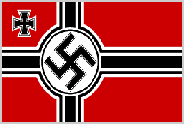
KRIEGSMARINE - Nazi Germany - The period leading up to World War II ...
When the Nazis came to power in 1933, Adolf Hitler soon began to ignore many of the Treaty restrictions and accelerated German rearmament. The Anglo-German Naval Agreement of 18 June 1935 then allowed Germany to build a navy equivalent to 35% of British surface ship tonnage and 45% of British submarine tonnage; battleships were to be limited to no more than 35,000 tons. That same year the Reichsmarine was renamed as the Kriegsmarine. The Kriegsmarine was one of three official branches of the Wehrmacht.
Following the 1938 crisis caused by the German occupation of Czechoslovakia, Germany abandoned all pretensions of adherence to treaty limitations on its navy.
Plan Z, the blueprint for the German naval construction program finalized in 1938, envisaged building a navy of approximately 800 ships to be completed between the period 1939 – 1947. This project never became a full reality. It is very questionable that German industry would have had the resources for such a construction program and that the other European Nations would stood still and not react to this program. The realization of the Z-Plan was implemented on January 29th, 1939. Two H-Class battleships (H-39) were laid down, three months later Germany quit the the fleet treaty with England and the dream "No more war against Britain" was gone. Then, only four months later, Germany attacked Poland and work on all Z-Plan projects was stopped. During the next months of the war, all incomplete ships of the Z-plan were scrapped and the material was used to build additional submarines.
Plan Z was the name given to the planned re-equipment and expansion of the Nazi German Navy (Kriegsmarine) ordered by Adolf Hitler on January 27, 1939. The plan called for a Kriegsmarine of 10 battleships, 4 aircraft carriers, 3 battlecruisers, 44 light cruisers, 8 heavy cruisers, 68 destroyers and 249 U-boats by 1944 that was meant to challenge the naval power of Great Britain
Following the end of World War I, the German armed forces became subject to the stipulations of the Treaty of Versailles. For the navy, this meant it was restricted to six armoured warships ("panzerschiffe"), six cruisers, twelve destroyers and twelve torpedo-boats. With the scuttling of the majority of the High Seas Fleet at Scapa Flow, new construction was needed. The first major ship to be built after the war was the light cruiser Emden. This was followed by a further three light cruisers of the K class, Königsberg, Karlsruhe and Köln, and a further two ships that were modified versions of the K class, Leipzig and Nürnberg.
The Treaty also stipulated that Germany could replace its armoured ships as needed, but with vessels that were not more than 10,000 tons displacement. When it came time to replace some of the earlier vessels, the panzerschiff concept was created. This was designed primarily as an aggressor towards merchant shipping, or merchant raider, with the proviso that it be "stronger than faster enemies" (cruisers) and "faster than stronger enemies" (battleships). This led to the Deutschland, a ship with six 11-inch guns and a speed of 28 knots. Two further units, Admiral Scheer and Admiral Graf Spee followed. These were called "pocket battleships" in the outside world.
The panzerschiff concept was by no means new. The same "stronger than faster, faster than stronger" design concept was the basis of the battlecruiser that was widely built prior to World War I. In combat, the battlecruiser was put into the same lines as the battleships, where it could no longer use its superior speed to stay out of trouble. Battlecruiser on sides suffered high losses during the Battle of Jutland and the class was considered dead by military planners. However, changes in technology, especially power plants, re-invigorated the design class, allowing the Germans to build ships that were smaller, better armored and still faster than their WWI counterparts. The new designs were widely lauded around the world.
In 1933, Adolf Hitler became the Chancellor of Germany. He withdrew from the stipulations of the Treaty of Versailles and began the systematic re-building of the armed forces. The prestige brought by the panzerschiffe led to two improved vessels, Panzerschiffe D & E to be ordered - these became the Scharnhorst and Gneisenau, which were larger than their predecessors, with nine instead of six guns. At the same time, studies were made into the construction of two even larger vessels. These were initially going to be panzerschiffe with 13" guns, but with the improvements to the French fleet at the time, the new ships were redesigned as full schlachtschiffe (battleships). At this time, it was decided to embark on a large scale re-building of the German Navy, and so Plan Z was evolved.
The Z-Plan was Nazi Germany’s fleet building program started shortly before World War II.
Within the Kriegsmarine, two bodies of opinion were massed as to the direction of the re-equipment of the Navy: + A large battle fleet capable of taking on the most powerful opponents (Britain and France). + A large force of U boats and medium sized warships such as the panzerschiffe for destruction of the enemy's commercial shipping.
It was pointed out that in order to carry out commerce raiding in the Atlantic Ocean, German ships would have to pass through the North Sea, which was likely to be filled with British battleships. So, the large fleet option was chosen.
According to this plan, the German Kriegsmarine would have grown to about 800 units, consisting of 13 battleships and battle cruisers, 4 aircraft carriers, 15 Panzerschiffe, 23 cruisers and 22 so-called "Spähkreuzer" which were basically large destroyers. In addition, many smaller vessels would have also been built.
Those ships would have been built between 1939 and 1946; in this time, the personnel strength of the Kriegsmarine should have been enlarged to 201,000 men and over 33 billion Reichsmarks should have been spent for construction of the new units.
However, these ambitious projects never were realized. It is questionable whether the German industry would have had the resources for such a monumental construction program and that the other European nations would have just stood still and not reacted to this program.
The plan as it came about would have seen the completion of the two battleships under construction (Bismarck and Tirpitz) to an interim design, as well as three heavy cruisers (Admiral Hipper, Blücher and Prinz Eugen), plus a further two launched in 1939, before the major construction work began. The plan was then to have the majority finished by 1945.
+Four aircraft carriers, (two of the Graf Zeppelin-class, plus two others)
+Six H Class battleships
+Three "O Class" battlecruisers
+Twelve "Kreuzer P Class" Panzerschiffe
+Two Hipper Class heavy cruisers (Seydlitz, and Lützow)
+Four "M Class" light cruisers
+Two "Improved M Class" light cruisers
+Six " Spähkreuzer Class" large destroyers
The first work saw construction begin on the aircraft carrier Graf Zeppelin in 1936, with a second planned to begin in 1938. In mid 1939, following the launch of both Bismarck and Tirpitz, the keels of the first three improved battleships were laid, while orders were placed for the modified Messerschmitt Bf 109 fighters and Junkers Ju87 dive bombers for the aircraft carriers. However, with the outbreak of the Second World War, it was decided that the large and expensive construction projects required too much of the materials vital to keep the Heer and Luftwaffe up and running. As a consequence, work on the battleships was halted, and the materials were diverted to the construction of U-Boats. Some Bf 109Ts were completed, though later stripped of their carrier equipment and stationed in Norway.
Since the simultaneous and rapid build-up of the German army and airforce demanded substantial effort and resources, the planned naval program was not very far advanced by the time World War II began. Implementation only began in January 1939 when three H-class battleships and two M-class light cruisers were laid down. On September 1, 1939, the navy still had a total personnel strength of only 78,000, and it was not at all ready for a major role in the war. With expectations in Germany of a quick victory by land, Plan Z was essentially shelved and the resources initially allocated for its realization were largely redirected to the construction of U-boats.
By the start of World War II, much of the Kriegsmarine were modern ships: fast, well-armed and well-armoured. This had been achieved by concealment but also by deliberately flouting World War I peace terms and those of various naval treaties. However, the war started with the German Navy still at a distinct disadvantage in terms of sheer size with what were expected to be its primary adversaries-the navies of France and Great Britain. Although a major re-armament of the navy (Plan Z) was planned, and initially begun, the start of the war in 1939 meant that the vast amounts of material required for the project were diverted to other areas. The sheer disparity in size when compared to the other European powers navies prompted German naval commander in chief Grand Admiral Erich Raeder to write of his own navy once the war began "The surface forces can do no more than show that they know how to die gallantly." A number of captured ships from occupied countries were added to the German fleet as the war progressed.
At the outbreak of World War II, the German Kriegsmarine consisted of 11 Ships of the size of a CL or bigger, while 7 additional ships were under construction. This small fleet was supported by 21 destroyers and 57 U-boats, most of them only usable for small coastal operations. Compared to British, French or American fleets of this time, the German Kriegsmarine was very small, but at the beginning of the war, the Kriegsmarine surface units still archived some spectacular victories against the British Royal Fleet.
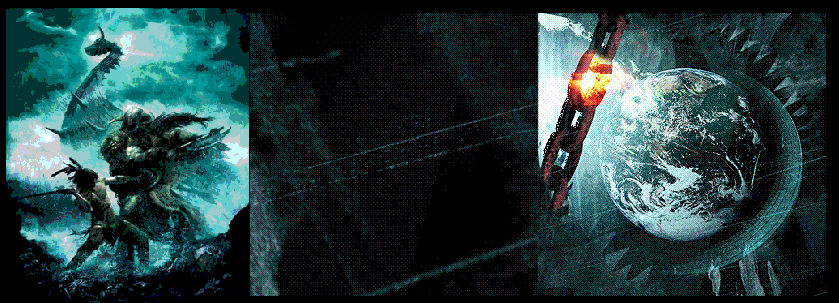
The first military action of the Kriegsmarine came during the Spanish Civil War (1936–1939). Following the outbreak of hostilities in July 1936 several capital ships of the German fleet were sent to the region. The Deutschland, Admiral Scheer, and light cruiser Köln were the first to be sent in July 1936. These capital ships were accompanied by the 2nd Torpedo-boat Flotilla. Ostensively, the German presence was used to covertly support Franco's Nationalists although the immediate involvement of the Deutschland was humanitarian relief operations and the rescuing of 9,300 refugees from the fighting, including 4,550 Germans. Following the brokering of the International Non-Intervention Patrol to enforce an international arms embargo the Kriegsmarine was allotted the patrol area between Cabo de Gata (Almeria) and Oropesa. Numerous vessels served as part of these duties including Admiral Graf Spee. Uboats also participated in covert action against Republican shipping as part of Operation Ursula. At least eight uboats engaged a small number of targets in the area throughout the conflict. By way of comparison the Italian Navy, Regia Marina, operated fifty-eight submarines in the area as part of Sottomarini Legionari. On 29 May 1937 the Deutschland was attacked in the Deutschland incident off Ibiza by two bombers from the Republican Airforce. Total casualties from the Republican attack were 31 dead and 110 wounded, 71 seriously, mostly burn victims and in retaliation the Admiral Scheer shelled the harbour of Almeria on 31 May. Following further attacks by Republican submarine forces against the Leipzig off port of Oran between 15–18 June 1937 Germany withdrew from the Non-Intervention Patrol although maintained a continuous presence in the area until the end of the conflict.
The Kriegsmarine was involved in World War II from the start of the war and participated in the Battle of Westerplatte and the Battle of the Danzig Bay during the Invasion of Poland. In 1939, major events for the Kriegsmarine were the Battle of the River Plate, the sinking of the Battleship HMS Royal Oak, and the sinking of the Aircraft Carrier HMS Courageous. The Battle of the Atlantic started in 1939, although the German submarine fleet was hampered by the lack of good ports from which to attack Allied shipping.
In April 1940, the main action the German Navy was involved in was the invasion of Norway, where it suffered quite heavy losses, including the Heavy Cruiser Blücher sunk by the guns of Oscarsborg Fortress in the Oslofjord, ten destroyers lost in the Battles of Narvik and two light cruiser lost elsewhere during the campaign. The Kriegsmarine did however sink a number of British ships during this campaign, including the Aircraft Carrier HMS Glorious.
The losses in the Norwegian Campaign meant that only a handful of heavy ships were ready for action for the planned, but never executed, invasion of Britain (Operation Sealion) in the summer of 1940. There were serious doubts that the invasion sea routes could have been protected against British naval action. After the fall of France and the conquest of Norway, the German submarine fleet was brought much closer to the British shipping lanes in the Atlantic. At first, the British merchant convoys lacked radar equipped escorts; as such, the submarines were very hard to detect during their nighttime surface attacks. This year was for these reasons one of the most successful for the Kriegsmarine, as measured in terms of merchant shipping sunk compared to submarines lost (the First Happy Time).
Italy entered the war in June 1940, and the Battle of the Mediterranean began: from September 1941 to May 1944 some 62 German submarines were transferred there, sneaking past the British naval base at Gibraltar. The Mediterranean submarines sunk 24 major Allied warships (including 12 destroyers, 4 cruisers, 2 aircraft carriers and 1 battleship) and 94 merchant ships (449,206 tons of shipping). None of the Mediterranean submarines made it back to their home bases as they were all either sunk in battle or scuttled by their crews at the end of the war.
In 1941 one of the four modern German battleships, the Bismarck sank HMS Hood while breaking out into the Atlantic for commerce raiding. However, the Bismarck was in turn hunted down by much superior British forces after receiving crippling damage from a torpedo plane and scuttled after taking a heavy beating from two British battleships.
Throughout the war the Kriegsmarine was responsible for coastal artillery protecting major ports and important coastal areas and also anti-aircraft batteries protecting major ports.
During 1941, the Kriegsmarine and the United States Navy became de facto belligerents, although war was not formally declared, leading to the sinking of the USS Reuben James. The Japanese attack on Pearl Harbor and the subsequent German declaration of war against the United States in December 1941 led to another phase of the Battle of the Atlantic. In Operation Drumbeat and subsequent operations until August 1942, a large number of Allied merchant ships were sunk by submarines off the American coast as the Americans had not prepared for submarine warfare, despite clear warnings (this was the so-called Second happy time for the German navy). The situation became so serious that military leaders feared for the whole allied strategy.
The vast American ship building capabilities and naval forces were however now brought into the war and soon more than offset any losses inflicted by the German submariners. In 1942, the submarine warfare continued on all fronts, and when German forces in the Soviet Union reached the Black Sea, a few submarines were eventually transferred there.
The Battle of the Barents Sea was an attempt by a German naval force to attack an Allied Arctic convoy. However, the advantage was not pressed home and they returned to base. There were serious implications: this failure infuriated Hitler, who nearly enforced a decision to scrap the surface fleet. Instead, resources were diverted to the U-boats, and the surface fleet became a lesser threat to the Allies.
After 1943 when the Scharnhorst had been sunk in the Battle of North Cape by HMS Duke of York, most of the German surface ships were pent up in or close to their ports as a fleet in being, for fear of losing them in action and to tie up British naval forces. The largest ship of these ships, the battleship Tirpitz, was stationed in Norway as a threat to Allied shipping and also as a defense against a potential Allied invasion. When she was sunk by British bombers in late 1944 (Operation Catechism), several British capital ships could be moved to the Pacific.
From late 1944 until the end of the war, the surface fleet of Kriegsmarine was heavily engaged in providing artillery support to the retreating German land forces along the Baltic coast and in ferrying civilian refugees to the western parts of Germany (Lübeck, Hamburg) in large rescue operations. Large parts of the population of eastern Germany fled the approaching Red Army out of fear for Soviet retaliation and mass rapes and killings. The Kriegsmarine evacuated large numbers of civilians in the evacuation of East Prussia and Danzig in January 1945. It was during this activity that the catastrophic sinking of several large passenger ships occurred: the Wilhelm Gustloff and the Goya was sunk by Soviet submarines, while the SS Cap Arcona was sunk by British bombers, each sinking claiming thousands of civilian lives. The Kriegsmarine also provided important assistance in the evacuation of the fleeing German civilians of Pomerania and Stettin in March and April 1945. In the last stage of the war, the Kriegsmarine also organized a number of divisions of infantry from its personnel (submarine crews and so on).
At the end of the war, only two of the major Kriegsmarine ships were still operational, all other were sunk, either during their operations or destroyed during the last months and weeks of the war in their bases.
During 1943 and 1944, due to Allied anti-submarine tactics and better equipment, the U-boat fleet started to suffer heavy losses. Radar, longer range air cover, improved tactics and new weapons all contributed. German technical developments, such as the Schnorchel, attempted to counter these. New U-boat types, the Elektroboote, were in development and, had these become operational in sufficient numbers, the Allied advantage would have been eroded.
Between 1943 and 1945, a group of U-boats known as the "Monsun Boats" (Monsun Gruppe) operated in the Indian Ocean from Japanese bases in occupied Indonesia. As the Allied merchant convoys had not yet been organized in those waters, the initial sinkings were plentiful. However, this situation was soon remedied. During the later war years, the "Monsun Boats" were also used as a means of exchanging vital war supplies with Japan.
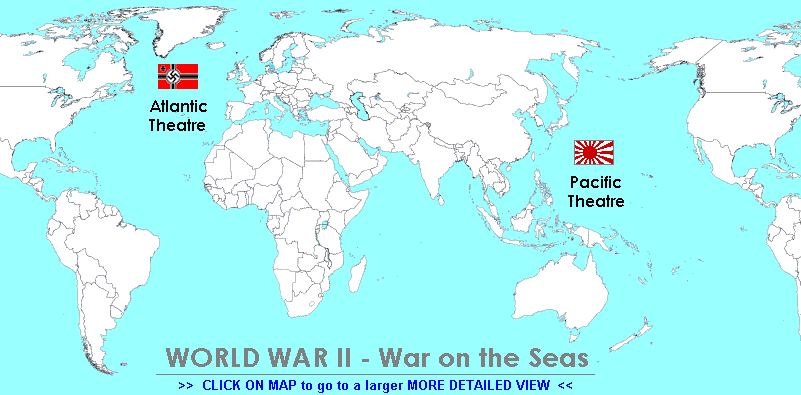
After the war, the German surface ships that remained afloat (only two large warships were operational) were divided among the victors. Some (like the unfinished aircraft carrier Graf Zeppelin) were used for target practice, while others (mostly destroyers and torpedo boats) were put into the service of Allied navies that lacked surface ships after the war. The British, French and Soviet navies received the destroyers, and some torpedo boats went to the Danish and Norwegian navies. The destroyers were all retired by the end of the 1950s, but some of the torpedo boats were returned to the new West German navy in the 1960s.
For the purpose of mine clearing, the Royal Navy employed German crews and minesweepers from June 1945 to January 1948, organised in the German Mine Sweeping Administration, the GMSA, which consisted of 27,000 members of the former Kriegsmarine and 300 vessels.
In 1956, with West Germany's accession to NATO, a new navy was established and was referred to as the Bundesmarine (Federal Navy). Some Kriegsmarine commanders like Erich Topp and Otto Kretschmer went on to serve in the Bundesmarine. In East Germany the Volksmarine (People's Navy) was established some time after the war. With the reunification of Germany in 1990, it was decided to simply use the name Deutsche Marine (German Navy).
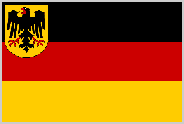
=================================================================================
NB: The above text has been collected / excerpted / edited / mangled / tangled / re-compiled / etc ... from the following online sources :
Naval history of Germany - wikipedia article #1
Kaiserliche Marine (Imperial Navy of the Kaiser) - wikipedia article #2
ReichsMarine (Navy of the Weimar Republic) - wikipedia article #3
NV Ingenieurskantoor voor Scheepsbouw (Dutch: engineer-office for shipbuilding) - wikipedia article #4
Kriegsmarine (War Navy of Nazi Germany) - wikipedia article #5
Plan Z (Nazi naval reconstruction plan) - wikipedia article #6
KM - Z-Plan(German fleet re-building program) - www.german-navy.de
List of Kriegsmarine ships - wikipedia article #7

